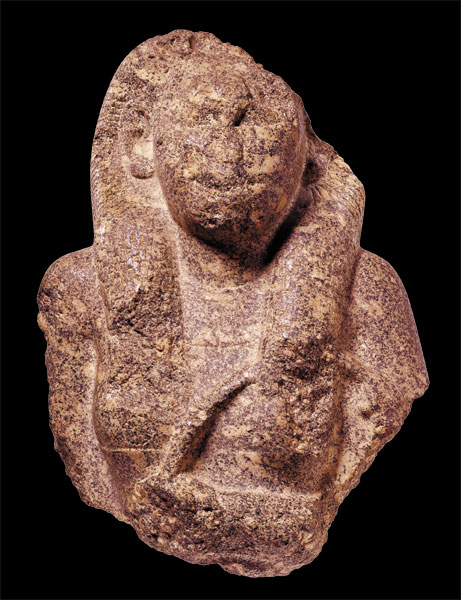
One thing leads to another. In a way, it can be said that the article you are now reading originated with another BAR article: In 2000 the prominent Jerusalem archaeologist Gabriel Barkay published an article in BAR titled “What’s an Egyptian Temple Doing in Jerusalem?”a1 Barkay summarized the evidence for an Egyptian temple in Jerusalem in the Late Bronze Age (1550–1200 B.C.E.), the period before Israel’s formation as a state in Canaan during Iron Age I (1200–1000 B.C.E.). This evidence included several Egyptian-style capitals that had been discovered in 1882 on the grounds of the École Biblique et Archéologique Française, just north of the Old City walls. Unfortunately, only one report published by the École Biblique from 1892 glancingly mentions these capitals (and describes them as “lotus-shaped”). Barkay was able to locate one of these capitals, however, which he would describe as “Egyptianizing” instead of “Egyptian” and which was found in secondary use in a wall of the Garden Tomb adjacent to the École Biblique.
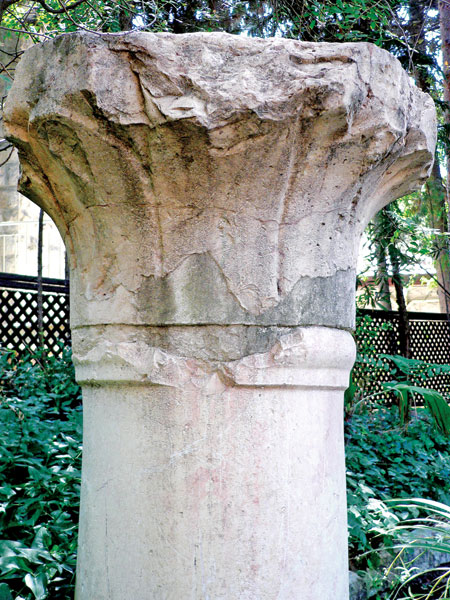
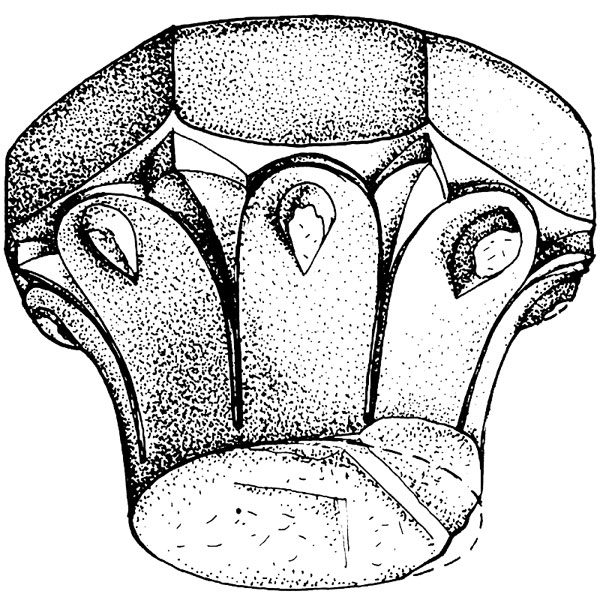
Barkay identified other long-lost or forgotten evidence to support his contention—including a fragment of a hieroglyphic stela and two alabaster vessels that he located in the collections of the École Biblique. We will refer to these later.
Barkay’s impressive detective work, reminiscent of nothing so much as Sherlock Holmes, suggested to me and two friends (David Ellis, a geneticist and bone specialist in Cambridge, and John Bimson, a Biblical historian of Trinity College in Bristol, England) that there might be other evidence of Egypt in Jerusalem that we could discover essentially by poking around—looking at old excavation reports and old collections—and asking questions. Eventually we formalized the project by affiliation with the University of Mainz, where I am pursuing post-doctoral research, and then with the University of Haifa, where Israeli archaeologist Michael Eisenberg joined us as co-supervisor of the project. The Israel Antiquities Authority (IAA) then issued a license for us to proceed.
The bottom line: We found considerable additional evidence to support an Egyptian presence in Jerusalem toward the end of the Late Bronze Age (the 13th century B.C.E.), more specifically during the 19th Egyptian Dynasty, the dynasty that included Ramesses II, also known as Ramesses the Great.
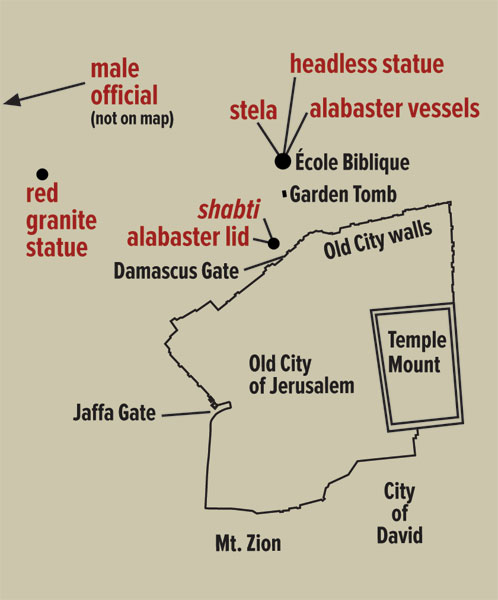

Egypt was not new to Canaan in the 19th Dynasty, however. From the famous Amarna letters discovered in 1887 at El-Amarna, Egypt, we know that Canaan was in effect an Egyptian province during the 14th century B.C.E. At least six letters in this cuneiform archive are from Abdi-Heba, the puppet-king of Jerusalem, to his Egyptian overlords Amenophis III (1390–1353 B.C.E.) and Amenophis IV, better known as Akhenaten (1353–1336 B.C.E.). In one of the letters, Abdi-Heba complains that, while the pharaoh himself had appointed him ruler over Jerusalem,2 the Egyptian monarch had failed to send troops to help fight rebels that sought to take over Egypt‘s Canaanite possession.Abdi-Heba adds an almost Biblical ring to his plea: “As the king has placed his name in Jerusalem forever, he cannot abandon it.”3
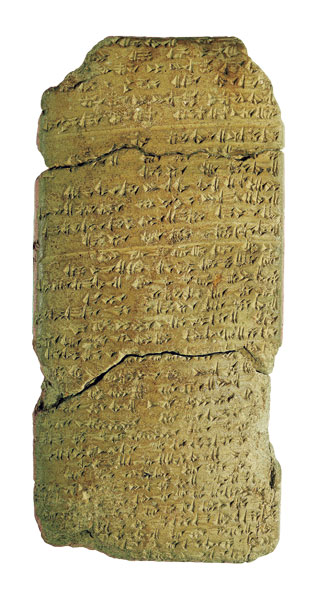
One of the last Amarna letters mentions the construction of a fortified house for Egyptian archers at Manahat, about 2 miles southwest of ancient Jerusalem.4 Indeed, archaeologists have uncovered the remains of a Late Bronze Age village there. Inside the village, the archaeologists recovered Egyptian scarabs of Amenophis III and Ramesses II.5
The prize find from Manahat, however, is a small faience figurine of the Egyptian god Bes,6 who was worshiped especially by pregnant women. This charm, too, probably dates to the Ramesside period.
The Jerusalem highlands were an ideal hideout for bandits and soldiers of fortune; the Egyptian garrison at Manahat was no doubt an effort to control them.
You might wonder why the mighty Egyptian army would have any interest in Jerusalem and the area around it. After all, Jerusalem is not situated on one of Canaan’s main trade routes. The two major north-south highways in the southern Levant lie elsewhere. One is the Via Maris, or Way of the Sea, along the Mediterranean coast, and the other is the King’s Highway in the Jordan Valley, east of the Jordan River.
On the other hand, Jerusalem does control north-south traffic on the central ridge, or central highlands, between Hebron in the south and Shechem in the north. Equally if not more important, east-west traffic from the Via Maris to the King’s Highway through the Ajalon Pass (and other more dangerous passes) crosses Jerusalem territory. From this viewpoint, it is understandable why the Egyptians considered Jerusalem to be of great importance.
One bit of evidence of an Egyptian presence was found quite accidentally in 1975 when archaeologist Jacqueline Balensi, a French scholar of Lyon University, was visiting the École Biblique. In an École Biblique rose garden she chanced upon the headless statuette of a seated Egyptian female deity, probably (as we see it now) of Sekhmet, the goddess of war and healing, whose image has been found elsewhere in early Iron Age levels in Jerusalem.b7 The date of this Sekhmet (if that’s who it is) is difficult to determine, although a Ramesside date cannot be excluded. Where the statuette came from is a bit unclear; it could have been brought to the École Biblique with soil to level the surface of the rose garden.

Other evidence has been examined by Barkay. I have already mentioned two Late Bronze Age alabaster vessels that were found by the Dominican Fathers of the École in 1882. One of the vessels is drop shaped; the other is the lower part of a base-ring stone jug. Both alabaster vessels clearly date to the Late Bronze Age, the period of the previously mentioned pharaohs. Both are almost certainly burial gifts.8
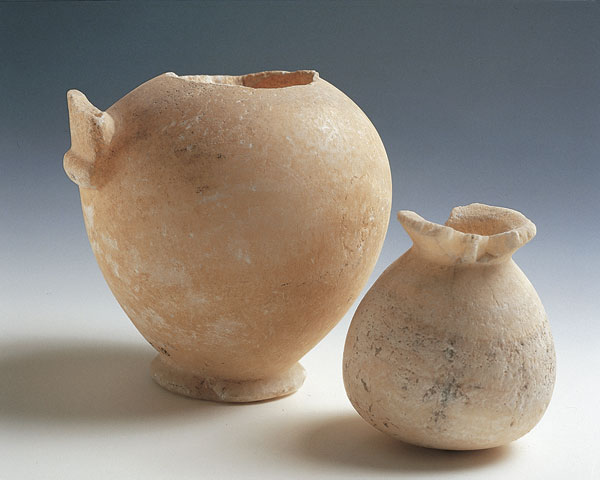
My colleague Christoffer Theis, of Heidelberg University, has recently restudied the stela fragment mentioned by Barkay and originally found in the 1882 excavation led by Père Marie-Joseph Lagrange, the founder of the Dominican monastery of which the École Biblique is a part. Unfortunately, only 17 of the hieroglyphic signs divided over four-and-a-half columns of text survive. Theis nevertheless has been able to suggest a new reading of the text.9 It refers to someone guarding “a ruler,” quite possibly the local ruler of Jerusalem. The stela is clearly funerary, so it could well have originally come from a cemetery near today’s École Biblique. The stela fragment is almost certainly of Ramesside date and finds close parallels from the time of Ramesses II and his immediate successors.
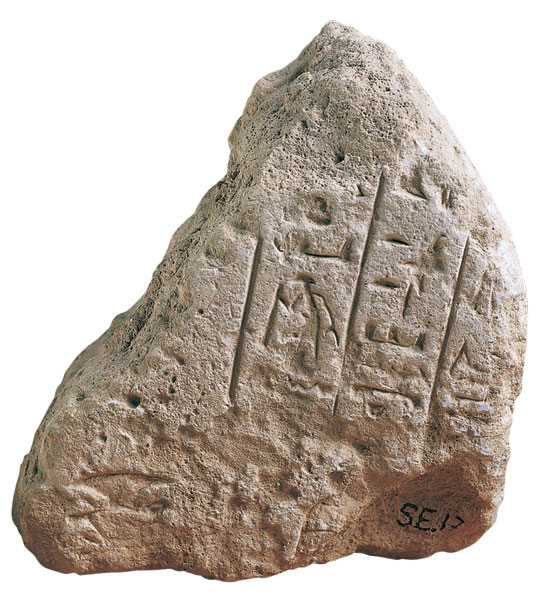
In further explorations our team located the lid of another Late Bronze Age alabaster vessel that had been found during construction work of a public building around 1960. We came across it in a cupboard in the vaults of the dormitory adjacent to the public building that contained several artifacts found at that time. The alabaster lid appears to have been used to seal a Late Bronze Age drop-shaped alabaster juglet similar to the previously mentioned one found at the École Biblique.
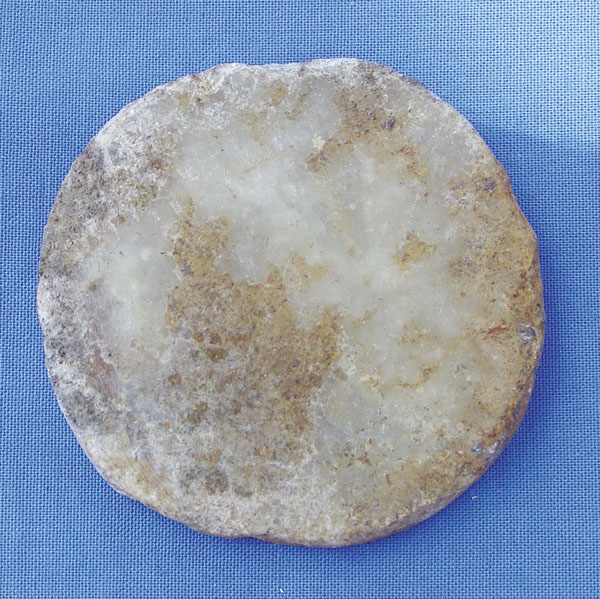
We also discovered that the same construction work that led to the discovery of the alabaster lid had recovered the lower half of a medium-sized shabti, an Egyptian funerary figurine. The shabti is inscribed in hieroglyphic with a name, only part of which remains: “The illuminated Osiris, […]-hetepu.” Both the style of the shabti, as well as the inscription, suggest a date in the 19th Egyptian Dynasty, the Ramesside period.
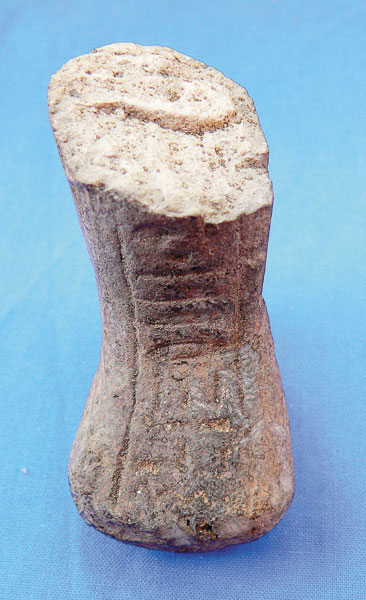
Perhaps our most exciting find was recovered in Germany. One day in 2006, I received a telephone call from my colleague Alexander Schick. The previous day he had seen something quite remarkable on a bookshelf in the office of a senior scholar from northern Germany (who prefers to remain anonymous), namely the upper body of a statue of an Egyptian queen made of coarsely grained red granite, some 14 inches high.
How in the world did it get to Germany? In the 1920s, when Palestine was under the British Mandate, the father-in-law of the scholar on whose bookshelf the statue stood had served the German Lutheran church in an ecclesiastical capacity in Jerusalem. At that time some Arab workmen discovered the statue in the gravel underneath the road they were paving. As the clergyman’s house was nearest to the place of the statue’s discovery, it was brought to the clergyman, and it has remained in the family’s possession ever since.
The red granite statue has now been fully studied by Egyptologist Simone Burger-Robin of Brussels, an expert in Ramesside statuary, who confirms that it definitely depicts a queen.10 Although the face is damaged, the other details are very clear. The royal lady wears a heavy wig with elaborate beading, originally mounted by a vulture crown. Her dress is close fitting with a beaded collar. She holds a lotus scepter in her left hand. Although no inscription remains on the statue, Burger-Robin concludes from its style that the provenance most likely falls within the reign of Ramesses II or of his son Merneptah (c. 1280–1200 B.C.E.). This date is fully concordant with the other finds from Jerusalem.
While male pharaonic statues are rare in Israel, queens’ statues are almost unknown. The only other one found in the entire southern Levant (it was found in a survey near Ashdod, in a coastal area where the Egyptians were especially active) includes a small inscribed fragment; she is apparently the daughter of Ramesses II.
Finally, we discovered a small fragment of an Egyptian statue in a warehouse of the Israel Antiquities Authority.11 The statue is of a male official, apparently of high rank. It was found in 1951 by children in the garden of a private landowner about 550 yards due west of the clergyman’s Jerusalem house where the queen’s statue was brought by Arab workmen.
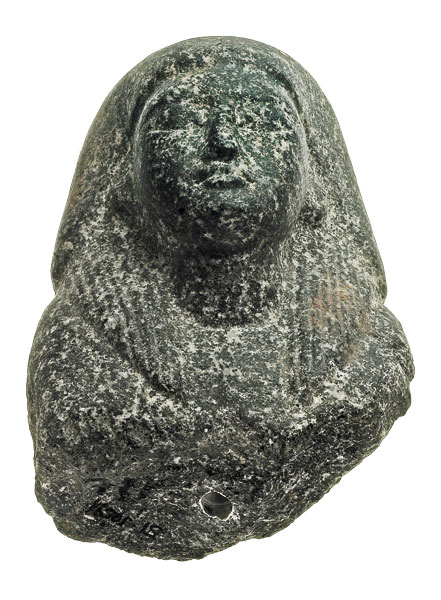
The male statue is made of black-and-white spotted granite. The statue’s two-part wig and facial features date him, once again, to the time of Ramesses II.12 Crudely carved hieroglyphs on the back read: “Padipet, Osiris, Lord of the Thrones, Horus […]” Although unfortunately the name of the pharaoh this official served is not preserved, the reference to Osiris (the mummified god of the dead) indicates that it must originally have been set up in, or near, a burial context.
All these finds seem to confirm American archaeologist Carolyn Higginbotham’s summary of the situation. The Ramesside pharaohs of the 19th Dynasty used local vassal rulers to run daily affairs in Jerusalem, as had their Amarna-period predecessors of the 18th Dynasty, but the pharaohs also sent out royal envoys to gather taxes and watch over the provinces.13
From the next period—just prior to David’s conquest of Jerusalem in about 1000 B.C.E.—we have almost no evidence of an Egyptian presence here—perhaps a few sherds at most.
The tenth-century B.C.E. pharaohs who were contemporaries of Solomon and his son Rehoboam, however, seem to have reasserted their age-old claim on Jerusalem, now firmly in Israelite hands. As the Bible tells us, Pharaoh Shishak sent his army north in about 925 B.C.E., in year 5 of the reign of King Solomon’s son and successor Rehoboam (1 Kings 14:25). This is substantiated by Egyptian records: The Biblical Shishak, believed by most scholars to be the Libyan Pharaoh Sheshonq referred to in Egyptian texts, mounted a major attack into Canaan at this time. Although the Bible says he attacked Jerusalem, the Egyptian account does not include Jerusalem among the named cities he conquered. This may be because the name Jerusalem has not survived in the partially preserved Egyptian account.c In any event, Sheshonq appears to have passed through the Jerusalem area when his army crossed over to the Jordan Valley.
In short, the Egyptians apparently ruled the area in the period before the Israelites consolidated their grip on the central highlands during Iron Age I (1200–1000 B.C.E.). The evidence of Egyptian dominance seems to have ended, however, at the time the Israelites fully settled the land in this period. But the Egyptians reasserted their power again in about 925 B.C.E. with Shishak/Sheshonq’s invasion of Canaan.
This certainly makes me wonder: Was David able to conquer Jerusalem (in about 1000 B.C.E.) because it was defended only by the Jebusite/Canaanites, without any Egyptian presence in the city?
Of course the absence of evidence—either textual or archaeological—of an Egyptian presence in Jerusalem in the period just before David’s conquest of the city or during his reign may be accidental. Or it may not be.
MLA Citation
Footnotes
Gabriel Barkay, “What’s an Egyptian Temple Doing in Jerusalem?” BAR 26:03.
See Eilat Mazar, “Royal Gateway to Ancient Jerusalem Uncovered,” BAR 15:03. See also Gabriel Barkay, “What’s an Egyptian Temple Doing in Jerusalem?” who thinks it may be Amon or Ptah (male); Raphael Giveon of Tel Aviv University considers it to be Ptah (n. 13).
See Yigal Levin, “Did Pharaoh Sheshonq Attack Jerusalem?” BAR38:04.
Endnotes
See also Gabriel Barkay, “A Late Bronze Age Egyptian Temple in Jerusalem?” Israel Exploration Journal 46 (1996), p. 23.
Gershon Edelstein and Ianir Milevski, “The Rural Settlement of Jerusalem Re-Evaluated: Surveys and Excavations in the Rephaim Valley and Mevasseret Yerushalayim,” Palestine Exploration Quarterly 126 (1994), pp. 14–15.
Two figurines of Sekhmet were found in Jerusalem, one on the Ophel (in Gate House C) and the other one above Area G in the City of David. Both figurines approximately date to the 12th–9th centuries B.C.E. See Eilat Mazar, The Palace of King David—Excavations at the Summit of the City of David—Preliminary Report of the Seasons 2005–2007 (Jerusalem: Shoham Academic Research and Publication, 2009), pp. 39–40; Eilat Mazar, Discovering the Solomonic Wall in Jerusalem: A Remarkable Archaeological Adventure (Jerusalem: Shoham Academic Research and Association, 2011), pp. 46–47. As for the statuette (of which only the lower half has been preserved), we prefer to identify it with a female deity. While Gabriel Barkay and Raphael Giveon have suggested a male deity (Amon or Ptah), we think that the pronounced upper leg section identifies “her” as a female. My colleague Christoffer Theis has suggested an identification with the goddess Sekhmet (who is attested on other items from Jerusalem), but this equation must remain tentative, as too little remains of the statuette to be certain.
They follow styles recently described by Rachel Sparks of University College London; Rachel T. Sparks, Stone Vessels in the Levant, Palestine Exploration Fund Annual VIII (London: Palestine Exploration Fund, 2007), esp. pp. 86–87, 217–218, 289 and 306.
See Christoffer Theis and Peter van der Veen, “Some ‘Provenanced’ Egyptian Inscriptions from Jerusalem: A Preliminary Study of Old and New Evidence,” in G. Galil et al., The Ancient Near East in the 12th–10th Century B.C.E.—Culture and History—Proceedings of the International Conference Held at the University of Haifa, 2–5 May, 2010, Alter Orient und Altes Testament 392 (Münster: Ugarit Verlag, 2012), pp. 509–523.
Simone Burger-Robin, “Analysis, Interpretation and Dating of a Problematic Egyptian Statuary Fragment Discovered in Jerusalem,” in Peter J. James and Peter G. van der Veen, eds., Solomon and Shishak: Current Perspectives from Archaeology, Epigraphy, History and Chronology, Proceedings of the Third BICANE Colloquium Held at Sidney Sussex College Cambridge, March 25–26, 2011 (Oxford, in prep.).
The author wishes to thank Drs. Simone Burger-Robin and Joan Fletcher for their help in dating this statue.

